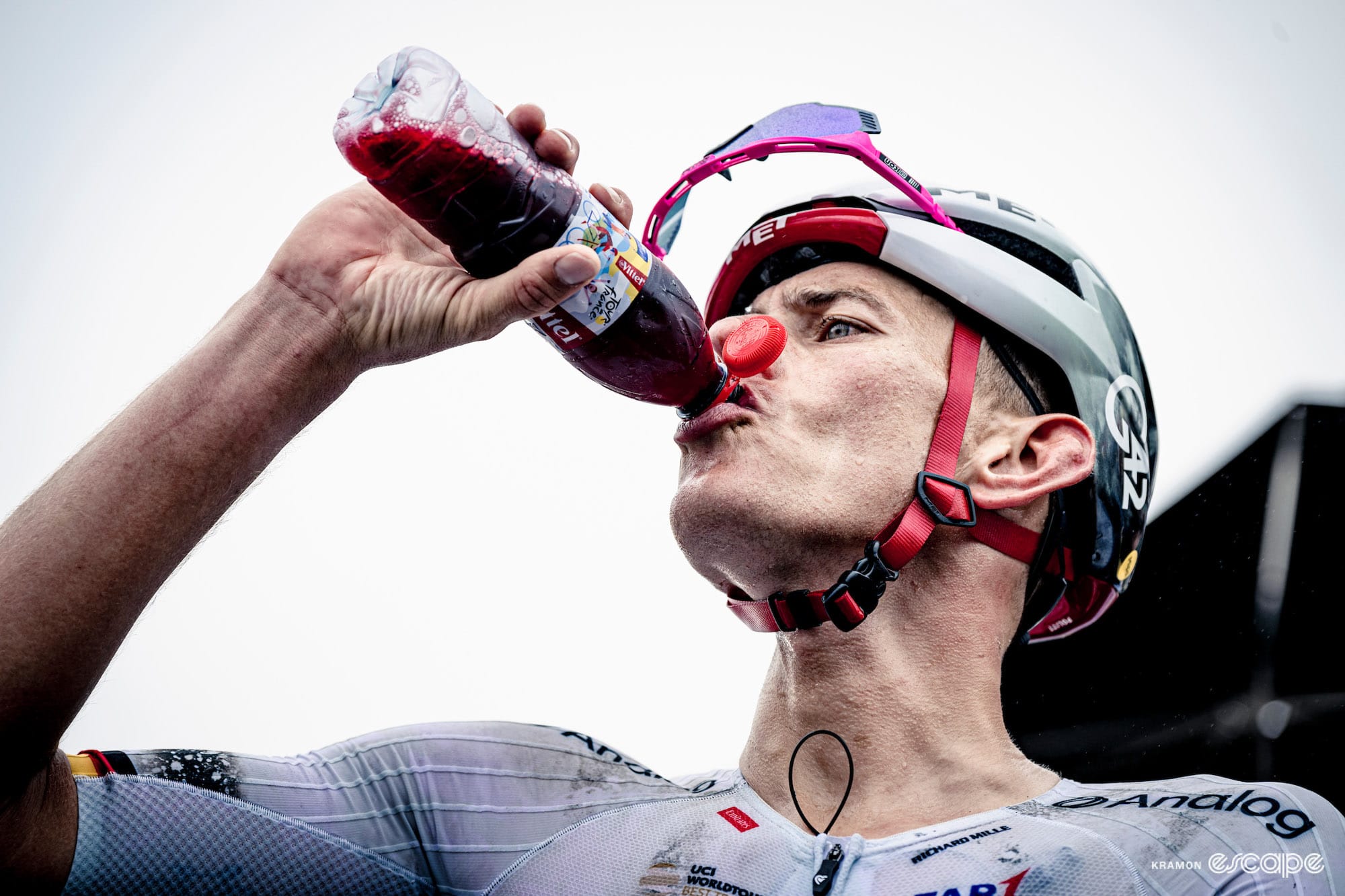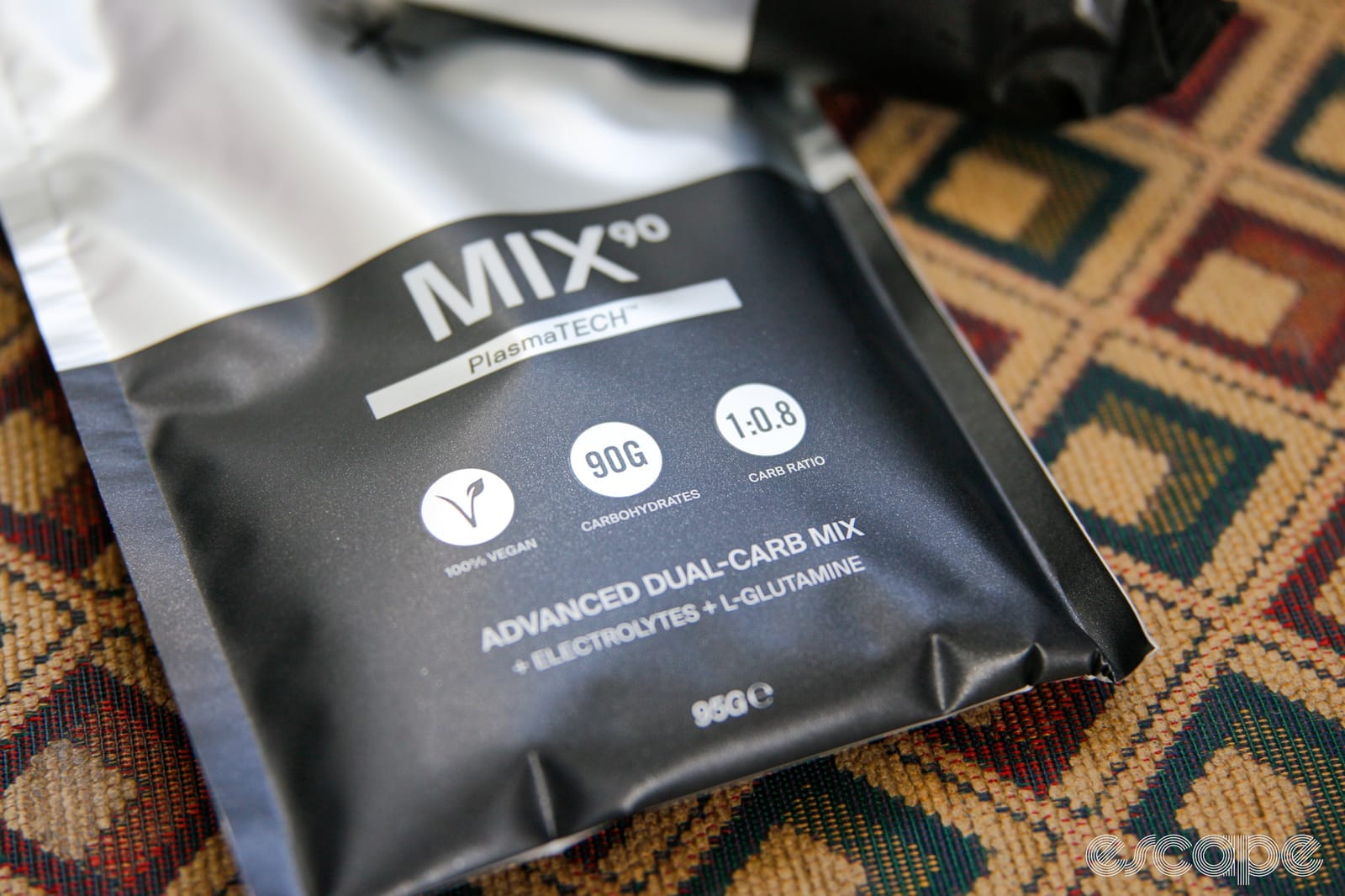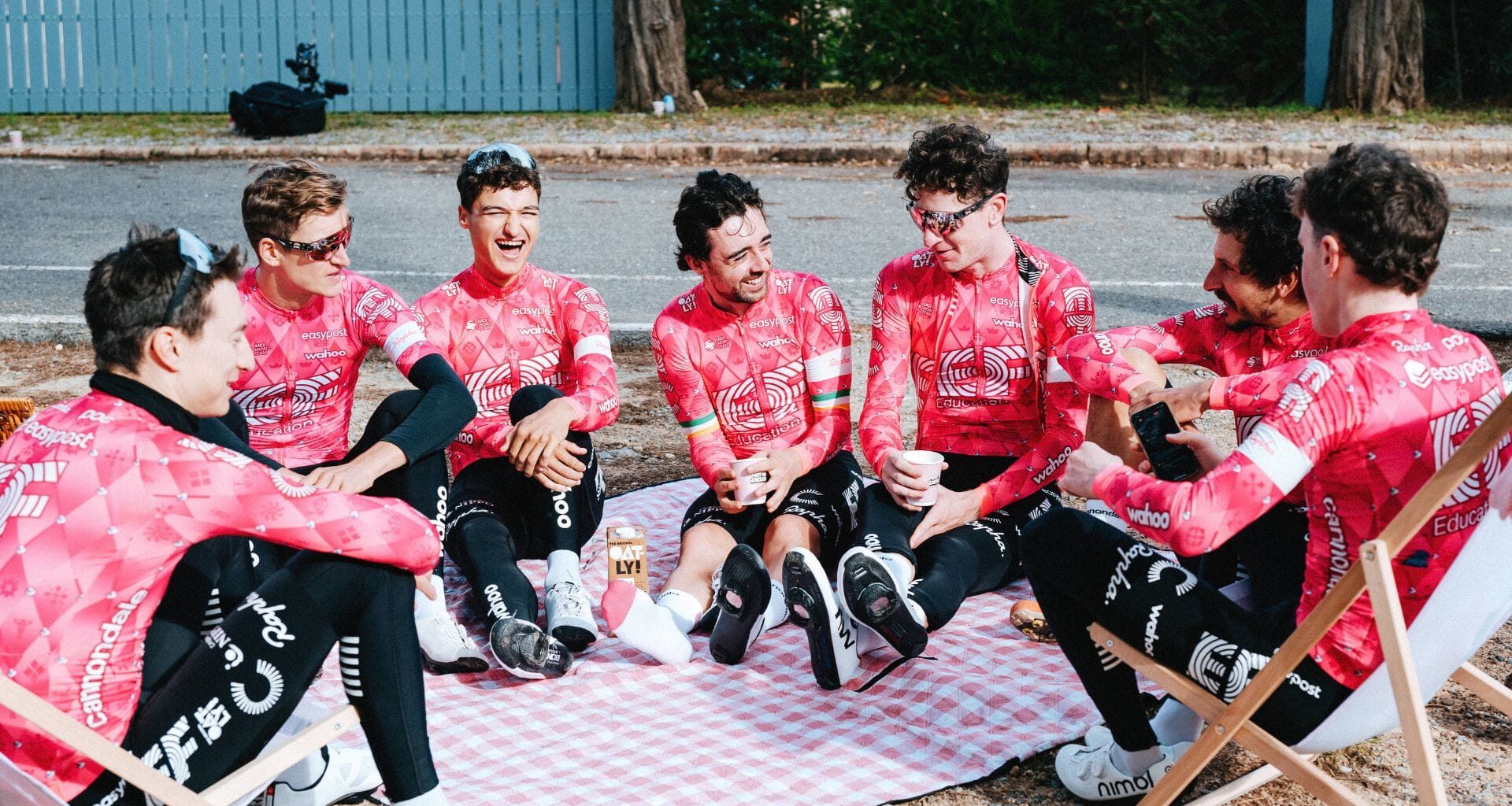
A Grand Tour is the ultimate test of fatigue resistance and recovery, but what role does nutrition play?

Gruber Images, Cor Vos, Kristof Ramon
Every July, the cameras roll as the peloton sprints, climbs, and grinds its way across France. The spotlight is on the racing: doomed yet audacious breakaways, shattered grupettos, and of course, the battle for yellow. But the real test of any Tour de France rider isn’t just what they do between the start and finish lines. It’s what happens in between the stages.
Once the stage is over, the next one is already looming. The clock is ticking, and any delay in key aspects of recovery like fuelling can spell trouble come the following stage.
Hey UAE, you dropped your cherry juice. So we drank it for you
When you find a lost bottle of recovery drink in a gondola, is there any other course of action?

Recovery isn’t glamorous. There is no miracle powder. It’s about eating enough when you don’t feel like eating, rehydrating when you’d rather lie down, and making a thousand small decisions that add up over three weeks. It’s also where a team’s nutrition staff earn their salary: building meal plans that change by the day, managing fatigue, appetite, and even sleep.
We spoke to Tim Podlogar, nutrition consultant to Tudor Pro Cycling and formerly Red Bull-Bora-Hansgrohe – a man who understands what really goes on behind the scenes, about how the best riders in the world try to get their legs back, day after day after day.
Recovery is about carbs more than it is about protein
If there’s one recovery rule at the Tour de France, it’s this: get the carbs in.
While protein has been the headline act in sports recovery for years, thanks in part to gym culture and the ubiquity of protein shakes, the truth is that, at least during a Grand Tour, carbohydrate matters much more.
 You might think everyone is focusing on protein, but recovery at the Tour is predominantly about carbs, and a lot of them.
You might think everyone is focusing on protein, but recovery at the Tour is predominantly about carbs, and a lot of them.
“The number one thing we’re worried about is glycogen,” says Podlogar. “Muscle and liver glycogen stores are the primary fuel for racing, and if riders start a stage even slightly depleted, you will see a drop in performance.”
It’s not just about how much carbohydrate riders consume, but how quickly and when they consume it. Glycogen synthesis happens fastest in the immediate aftermath of exercise, and the window to restock is narrow. Research shows that delaying carbohydrate intake by even a couple of hours can result in significantly lower glycogen restoration. When the start of the next stage is often less than 20 hours away, this is bad news.
This post is for paying subscribers only
Subscribe now
Already have an account? Sign in
Did we do a good job with this story?
👍Yep
👎Nope

